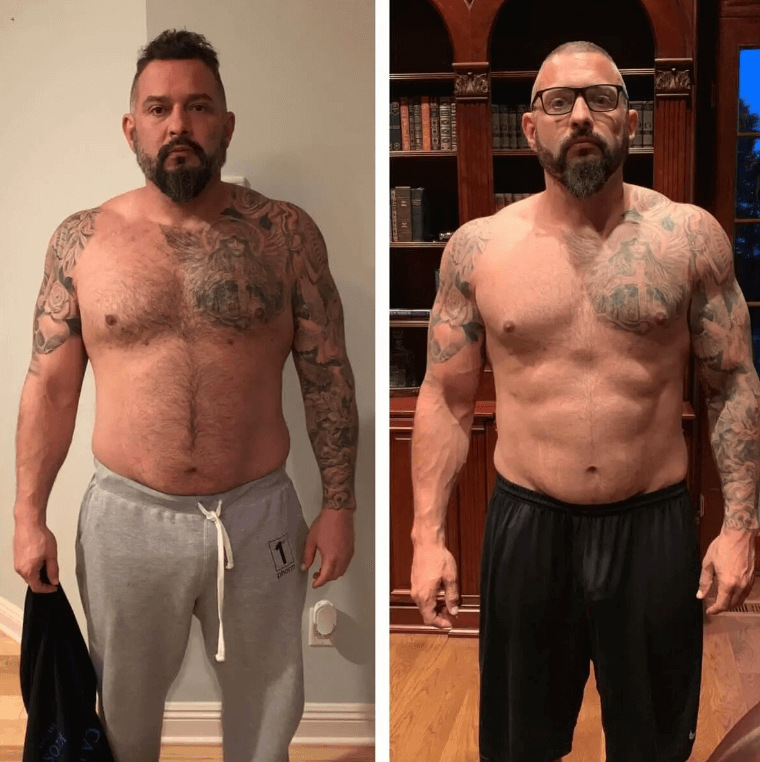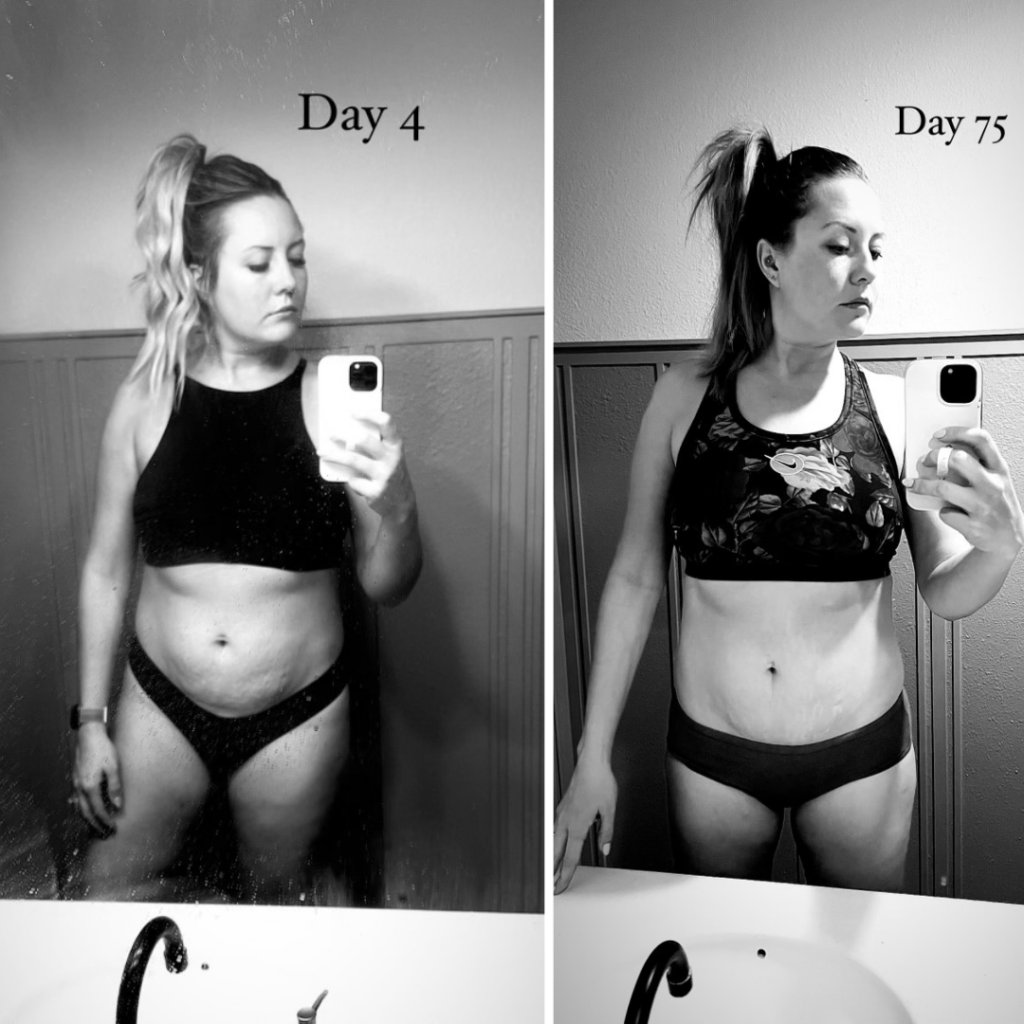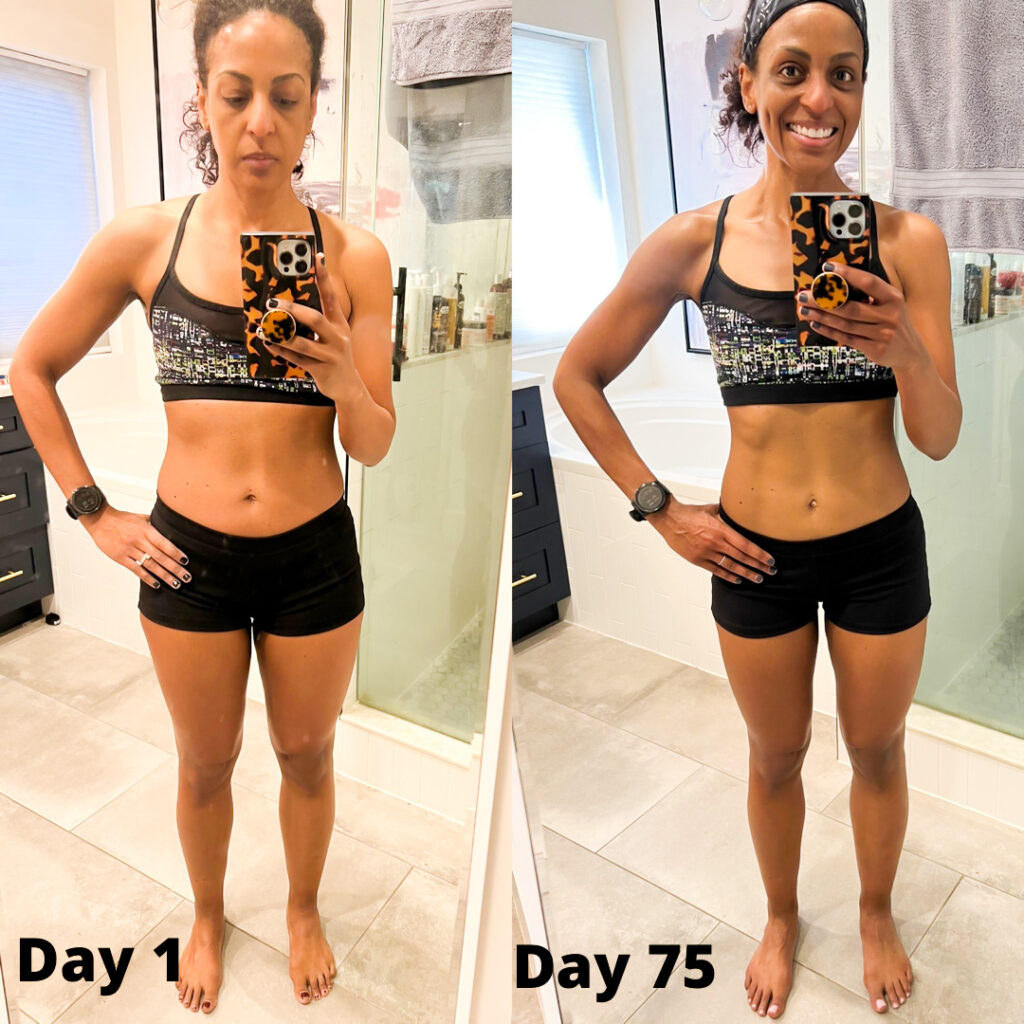Table Of Contents
One of the wonderful ways that have been proven to help you lose weight is by taking a diet. A diet consists of altering eating and other patterns to exclude specific foods and include others.
Let’s assume that you decide to watch your diet or follow a particular regimen and stick to it religiously for 3 consecutive months. Then, both the body as well as the mind is in for the change or transformation. Can you pass this challenge of body and soul?
What Is The 75 Day Hard Challenge?
The 75-day plan was created by motivational speaker and supplement company owner Andy Frisella. On his website, Andy writes that this is not a fitness program, but a way to change your life, including taking complete control of your life.
#75hardchallengedietplan became increasingly popular in 2019, when he made it up, especially on social media Instagram and TikTok.
The 75 hard challenge diet plan is a a challenge consisting of following the rules of nutrition and exercises. During these 75 days, you have to follow 5 main rules.
Some experts are skeptical about the 75 hard challenge because it has no evidence base and no scientific evidence of its effectiveness, but real people have shared how they coped with it and what results they achieved.
The 75 Hard Challenge diet plan is a diet plan that promises to give you the confidence and self-esteem you deserve. It provides a step-by-step guide to losing weight and reshaping your body in just a few months.
Andy shows by his example how to change your life from the inside out, organize your thoughts, and practice discipline and daring.
This plan will teach you how to improve the following qualities in your life 100!
- Confidence;
- Self-esteem;
- Self-worth;
- Self-belief;
- Fortitude;
- Grittiness.
Also, read – Dare to Transform: 75 Soft Challenge When 75 Hard is Too Much

https://andyfrisella.com/pages/75hard-info
What Are The 75 Hard Challenge Rules?
1 Step. Drink a gallon of water for 75 days.
Each time you drink water, it aids in flushing out the toxins from your body. It also keeps your metabolism going at a high rate, so you burn more calories throughout the day.
1 gallon (3.7 L or 128 oz) of water may seem like a lot, as doctors recommend drinking 2.7 for women and 3.7 for men. However, when you exercise intensely, your body will need this amount of water. More sweating = more drinking.
2 Step. Engage in 45 to 60 minutes of activity twice a day (one should be outside).
Physical workouts offer benefits such as aiding weight loss, maintaining it over time, boosting your mood, enhancing your fitness levels, and assisting in burning off calories. Optimal exercises for losing weight include integrating activities into your routine.
This entails dedicating 30 minutes to cardio or strength training sessions 3 or 4 times, incorporating muscle-building activities like push-ups or pull-ups on days. Add in yoga or stretching exercises, depending on your preference, to tackle this step.
This point may seem difficult for both beginners and people who train several times a week. A few tips to cope with this: schedule your workouts, mix up your exercises, and set realistic goals.
3 Step. When looking for a diet plan, it’s necessary to find one that suits your requirements.
Macros encompass the food categories and essential nutrients in our diet, like protein, carbs, and fats. It’s vital to select foods that align with your calorie targets and offer protein, fiber, vitamins, and minerals. The important thing is to follow a diet that meets your macro needs for health and well-being.
4 Step. Consume three meals each day, avoiding any meals or alcoholic beverages.
Following a regimen proves to be highly effective for weight loss as it boosts your metabolism and allows occasional treats. The fundamental concept of this diet is to structure your meals into three portions, aiding in adherence.
Initially, adhere to this diet to break free from overeating and excessive drinking habits. Refrain from consuming alcohol and sugary foods like honey, syrups, etc., on the day to kickstart the process effectively.
Dr. Sacco recognizes the significant challenges people face due to the emotional attachment society has with food. Making abrupt changes and ensuring thorough preparation can be particularly difficult, even after settling on a plan.
5 Step. Try fasting for 24 hours a week, where you only drink water and skip food.
For the week, give it a shot. See how it goes. You can also consider fasting, where you consume water for part of the day.
6 Step. Make it a habit to read 10 pages of inspiring books daily to enhance your growth.
Reading non-fiction can open up horizons. Bring positive changes to your life.
This habit will help you decompress your brain and slow down. Reading also helps improve your thinking ability and develops your imagination.
7 Step. Capture your progress by snapping a photo each day.
This visual record will allow you to see the changes, over time even if they may not be obvious, at a glance.




An important rule of the Challenge is that if you break even one point of the plan – you drink less than the specified water or read 8 pages of the book instead of 10, you start over.
Choose one of the 75 Hard Diet Ideas: no cheat meals & alcohol drinks
It’s clear that 75 hard challenges are suitable for you if you are ready to accept a challenge and are ready to change: 75 hard challenges are an excellent opportunity to lose weight within a short period and develop yourself.
The “75 Hard” is not a diet plan, but more like a mindset and discipline, and a set of routines and challenges. However, if you are interested in a diet for the challenge, then it must be understood whether it will work for 75 days or match your overall goals and aspirations for lead-up and maintenance. Here are a few diet options you can consider:
- Clean eating. Embrace an eating plan that focuses on nutrient-dense foods instead of embracing a diet that aims at eliminating certain foods from your diet in an endeavor to lose weight. The best word is to avoid any extra sugars and processed products that are present in the food chain.
- Keto diet. Mounts indicate that it includes following a fat-eating plan that can help in weight loss and boosting brain health. However, it is slightly difficult to sustain this diet for a whole 75 days and this will be one of the main considerations before choosing this diet.
- Intermittent Fasting. It was discovered that when it comes to intermittent fasting, one only needs to reduce the number of hours that one takes food in the day as a matter of course.
- Calorie counting. If you’re looking to shed some weight but refusing to hit the gym you may want to regulate the kind of food you are taking and ensure that you have a caloric deficit.
- Plant-Based diet. The concept of a Plant-Based diet therefore involves a conscious decision to focus on the consumption of fruits, vegetables, beans, and whole grain products while avoiding animal foods.
- Low-Carb. With regards to the dieting of obese people, basic changing of eating habits where reduction is made and going for proteins as well as non-starchy vegetables are some of the well-recommended practices.
Benefits of 75 Hard Challenge
- Body quality will improve;
- You will begin to have a more structured approach to your daily routine;
- You can be sufficiently flexible in your approach to choosing a meal plan;
- You will read several books in 75 days;
- You will get into the habit of drinking enough water each day.
What are the Drawbacks?
- Lack of specific rules;
- Rigid and rapid changes in the habitual life;
- Lack of a scientific approach in the program;
- Challenging your mental toughness.
How To Do a 75 Hard Challenge Checklist?
The primary step is to determine what you want to lose. For most people, that means the amount of weight they want to lose. You can make a checklist yourself by writing on paper or printing out ready-made templates and filling it in sequentially as you go through the program’s stages.
The main thing is to remember to fill it out every day and thank yourself every day for the points you have completed.

75 Hard vs 75 Soft
If someone finds it tough to meet all the requirements of the 75-day challenge checklist they can opt for the 75 more manageable day challenge.
In contrast to the rules of the challenge, the soft challenge focuses on adopting simple and achievable dietary habits over 75 days. One notable distinction is that while the hard challenge demands adherence without any leeway, the soft challenge allows for some flexibility. For instance, if outdoor exercise isn’t feasible due to weather conditions, indoor workouts can suffice to complete the challenge.
Both challenges aim to enhance resilience and discipline and promote routines. The key disparity lies in the intensity and level of dedication required, with the 75 Hard Challenge demanding a commitment level compared to its counterpart.

Will This Challenge Help You Lose Weight?
If you stick to the 75 Challenge and follow the basic rules, you are more likely to lose weight.
A combination of exercise and small dietary restrictions will lead you to get rid of the extra pounds, but of course, the results will depend only on you.
If the 75 plan still seems very complicated, you can start your journey to a healthy body in gentler ways. Lasta will teach you how to change your eating habits without severe food restrictions or grueling diets.
75 Hard Real Reviews
The success stories of individuals who have taken on the 75 Hard Challenge are truly inspiring. Many have shared their weight loss journeys, and enhanced fitness levels. Boosted self-confidence and mental resilience.
Katie Wells, a writer, at wellnessmama.com, mentioned that while “the 75 Hard Challenge may not suit beginners in the realm of health and fitness it can be a game changer for those looking to push their limits”. However, she pointed out that “the strict no flexibility rule may not be feasible or beneficial, for everyone”.
Lisa, the creator of Tried, Tested, and True expressed how her mental well-being saw a “significant improvement after completing the challenge”. She now feels “more empowered, capable, and accomplished”. This newfound confidence has also positively impacted her health by helping her “combat feelings of despair and exhaustion”. Additionally, Lisa noted transformations as well. Shedding 13.5 pounds by day 76!
Rob Cressy mentioned, “Completing the 75 Hard Challenge was a moment, for me leading to personal growth across various areas of my life like mindset, emotions, relationships, health, and work. This journey was truly transformative. Has sparked lasting changes in how I approach each day. After completing the challenge I continue to push myself to excel in every aspect of my life. I’ve integrated practices into my routine such as workouts reading self-improvement books staying hydrated with a gallon of water daily practicing gratitude using a power list for productivity visualization exercises meeting new people and spreading kindness through random acts. This way of life has become nature to me now; reverting back, to my habits is unimaginable.”
Many people have been talking enthusiastically about how the challenge has helped them establish habits that boost their productivity and bring transformations to both their personal and professional lives.
The 75 Hard Challenge has made an impact on the individuals who have opted to take it on. However, it may not be suitable for everyone, especially in terms of its demanding requirements. By committing to the program and holding themselves accountable, people have managed to exceed their expectations and achieve impressive results. If you are looking to improve your mental and overall well-being, consider embarking on the 75 Hard Challenge, as it could catalyze initiating the changes you seek.
What is the 75 Livehard Program and the Phases 1,2, and 3?
The “LIVE HARD” program consists of four stages that must be completed within a year. Here are the main points of each stage:
PART 1: 75 HARD
– Duration: 75 days – Daily Tasks:
– Follow a strict diet with no cheat meals.
– Exercise twice a day for 45 minutes each (one session outdoors).
– Drink one gallon of water daily.
– Read 10 pages of a non-fiction, self-development book.
– Take a progress picture daily.
– No compromise or substitutions allowed.
PART 2: PHASE 1
– Duration: 30 days (can start immediately after 75 HARD)
– Similar Tasks to 75 HARD with a few additions + 5 minute cold shower + 3 extra critical power list tasks + 10 minutes of dedicated visualization.
– Completion must leave enough time in the year to finish the last two stages.
– Failure to complete Phase 1 in time requires restarting the entire program.
PART 3: PHASE 2
– Duration: 30 days (can start after a 30-day break following Phase 1)
– Tasks identical to 75 HARD.
– Teaches the importance of maintaining momentum.
– Failure at any point requires restarting Phase 2.
PART 4: PHASE 3
– Duration: Last 30 days leading up to the anniversary of starting 75 HARD.
– Tasks include those from previous stages and additional ones like cold showers and critical power list tasks.
– Must align with the final 30 days of your year anniversary with 75 HARD.
– Failure at any point requires restarting the entire LIVEHARD program.
– Includes tasks like having a meaningful conversation with a stranger and performing random acts of kindness.
– Completion of all four stages leads to significant personal growth, increased confidence, discipline, and mental toughness.
The LIVEHARD program is designed for annual completion to continually build and maintain progress in various aspects of life.
Also, read – 75 Medium Challenge for Mind, Body, and Spirit Transformation!
Conclusion
The 75 Hard Challenge offers a rigorous regimen that sparks both praise and skepticism. It promotes physical fitness, mental resilience, and personal growth through strict adherence to daily routines in diet, exercise, hydration, reading, and reflection.
People achieve physical transformations and cultivate habits that enhance self-confidence and perseverance. Despite criticisms, the challenge motivates individuals to push beyond limits and emerge stronger in mind, body, and spirit. Whether embraced or not, its emphasis on discipline and perseverance inspires meaningful personal change.
FAQ’s
Does a walk count in 75 Hard?
Yes, especially if you walk a lot. Some days each week, both of your workouts could simply be walks.
Is smoking permitted during the 75 Hard Challenge?
Regarding the 75 programs, there is no stance, on smoking. However, it’s crucial to consider the core principles and objectives of the challenge. Smoking is widely recognized for its effects on mental well-being, which may go against the spirit of 75 Hard – a challenge centered around personal growth and self-improvement.
How many people finish 75 Hard?
The Andy Frisella website reports over a million successful completions of 75 Hard worldwide.
Is it cheating to change some rules on 75 Hard?
According to Andy Frisella, any changes to the program are cheating. But listen to what your body tells you, if you need these changes, make them.
Is participating in the 75 Hard Challenge bad for health?
The 75 Hard challenge has the potential to negatively impact health if not approached cautiously. Risks include overtraining, nutritional deficiencies, mental health strain, and physical injury. It’s crucial to consult with a healthcare professional, listen to your body, and maintain a balanced approach to exercise and recovery to minimize these risks and ensure the challenge supports overall well-being.
What happens if you get sick on 75 Hard?
if you are unable to continue due to illness or any other reason, you are required to start over from day one once you can resume.
What is the downside of the 75 Hard plan?
The 75 Hard Plan’s downsides, according to experts, include its strict rules, which may lead to challenges like overtraining, nutritional imbalances, and mental strain. Lack of flexibility and potential long-term sustainability are also concerns. Individuals should carefully consider these factors before committing to the challenge.
What is the easy version of 75 Hard?
If you are seeking a less intense and more flexible alternative to the “75 Hard” challenge, you may want to consider the “75 Soft” challenge. This modified challenge maintains the core principles while offering greater flexibility and adaptability to accommodate individual lifestyles.
How much weight can you lose on 75 Hard?
Weight loss on 75 Hard varies widely based on factors like starting weight, diet, and exercise intensity. Some may lose several pounds to over 10, 20, and even 30 pounds, but results vary by individual.
Does 75 Hard include cold showers?
Yes, it includes a 5-minute cold shower on the 75 Livehard program Phase 1,2,3.
Manahil Afzal is a seasoned clinical nutritionist with a Master's degree in Human Nutrition and Dietetics, boasting three years of extensive experience in the field. With a passion for promoting health and wellness globally, Manahil has cultivated a thriving career as a freelance dietitian, guiding clients worldwide to achieve their fitness goals through personalized nutrition plans. As a testament to her expertise, she has also co-authored a cookbook aimed at fostering healthier eating habits. Now, Manahil lends her expertise as a nutritionist to [website's name], where she diligently reviews articles, providing valuable insights and ensuring accurate, evidence-based nutrition information for the platform's audience.









Thanks for sharing this article. After reading this, I feel more confident and prepared to take it on!
I’ve heard much about the 75 Hard Challenge and was curious about the diet plan. This article provided great insight and answered all my questions. It’s good to know what I’m getting into before starting.
It was really informative, I’m glad I stumbled upon it. I’m still determining if the 75 Hard Challenge is for me, but I appreciate the tips and advice for maintaining a healthy diet!
Hi, Mike!
It’s great that you found the information helpful!😊Deciding whether the 75 Hard Challenge is a good fit for you takes careful consideration, and I’m pleased that the tips for maintaining a healthy diet were appreciated. Good luck on your path to better health!
I read the article about the 75 Hard Challenge and was impressed with your commitment to fitness and health. I’m considering taking on the 75 Hard Challenge myself, but I’m slightly intimidated. I’m not used to working out regularly and am unsure if I can stick to a strict diet for 75 days. But I’m inspired by this story of completing the challenge.
Hey, Lucas!
Taking on the 75 Hard Challenge can be intimidating, especially if you’re new to regular workouts and strict diets, but setting clear goals and starting small can help you stay motivated and gradually build up your fitness and mental toughness. Remember, it’s all about progress, not perfection💪
I’m curious about the challenges that people typically face when doing the 75 Hard Challenge. How can I stay motivated and avoid giving up?
Hi,Jessica!
The 75 Hard Challenge can be mentally and physically demanding, often challenging participants to maintain discipline and consistency. 😊 To stay motivated and avoid giving up, setting clear goals and reminding yourself of your reasons for undertaking the challenge can help you stay on track and overcome obstacles along the way. 😄
I’m inspired to start the 75 Hard Challenge after reading this article. Thank you for the motivation!
Hi, Alexander!
Your decision to embark on the 75 Hard Challenge after reading this article is truly inspiring and a testament to the motivating power of the content 😊 – wishing you all the best on your path to self-improvement and resilience! 🌟👏
I’m interested in doing either the 75 hard or soft, but it’s the diet part I need help with. What to eat what not to eat, etc. I already took out a lot from my diet, but I need guidance. Also more in detail as to what u are signing up for… I read a quite a bit but need a plan. Can’t wait to start either way.
Thank you!
Thank you, Martha 🤩 Good luck!